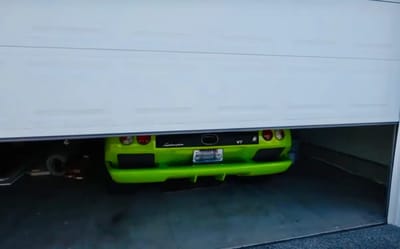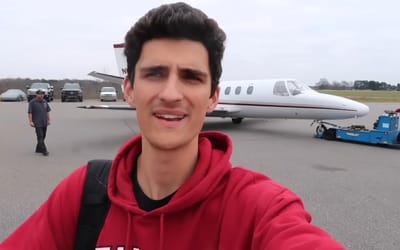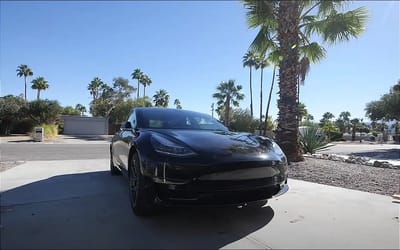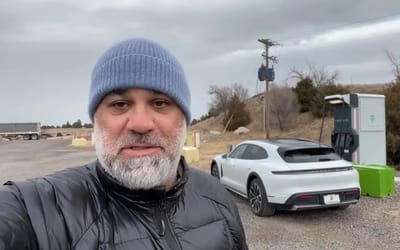The story of Boeing’s attempt to create a supersonic jet bigger and faster than the Concorde
- Boeing tried to build the aircraft during the peak of the Cold War
- It was also the golden era of the supersonic race
- Watch the video below to see the latest supersonic planes
Published on Aug 27, 2024 at 5:53 PM (UTC+4)
by Nalin Rawat
Last updated on Aug 28, 2024 at 7:07 PM (UTC+4)
Edited by
Tom Wood
Many aircraft manufacturers are now rushing to make supersonic jets — but back in the original supersonic race that started during the peak of the Cold War era, Boeing attempted to make a supersonic jet that was bigger and faster than the Concorde.
In the early 1960s, Britain and France signed an agreement to develop a unique commercial aircraft, which laid the foundation for the development of the Concorde.
Not wanting to lose out on aviation technology, the US also jumped into the supersonic race.
However, things didn’t quite work out as they planned.
DISCOVER SBX CARS: The global premium car auction platform powered by Supercar Blondie
The supersonic race
In June 1963, President John F. Kennedy announced that the US would take up the challenge to build the world’s first supersonic transport.
Their goal was ‘to develop at the earliest practical date the prototype of a commercially successful supersonic transport superior to that being built in any other country of the world.’
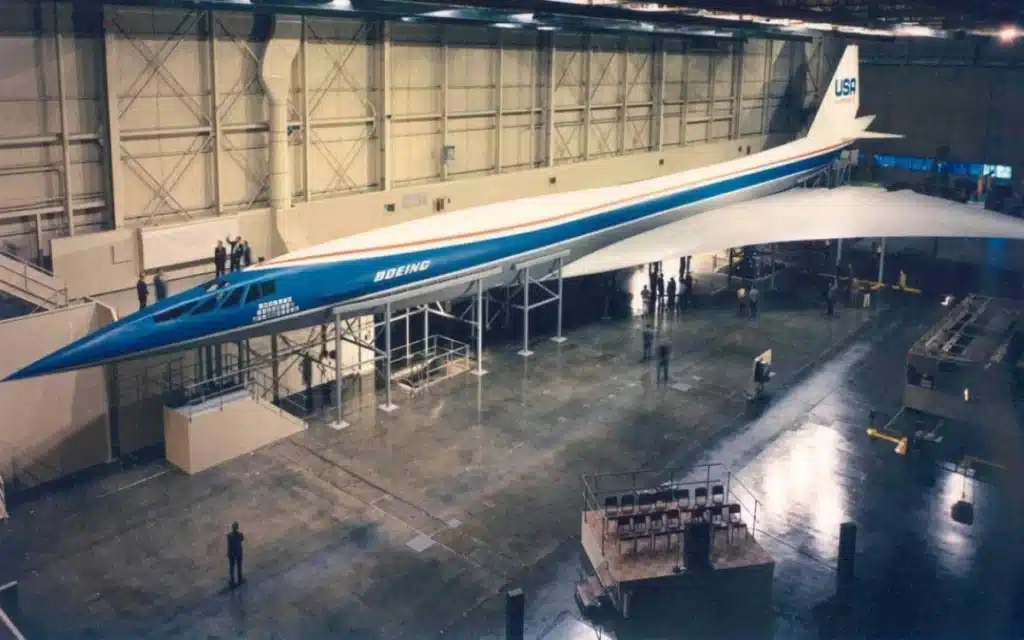
The US government even decided to cover 75 percent of the development costs.
Both Lockheed and Boeing submitted plans for a supersonic jet, but only the latter got approved.
In the end, the Boeing 2707 was selected as the winning design in 1967.
Boeing 2707 supersonic jet
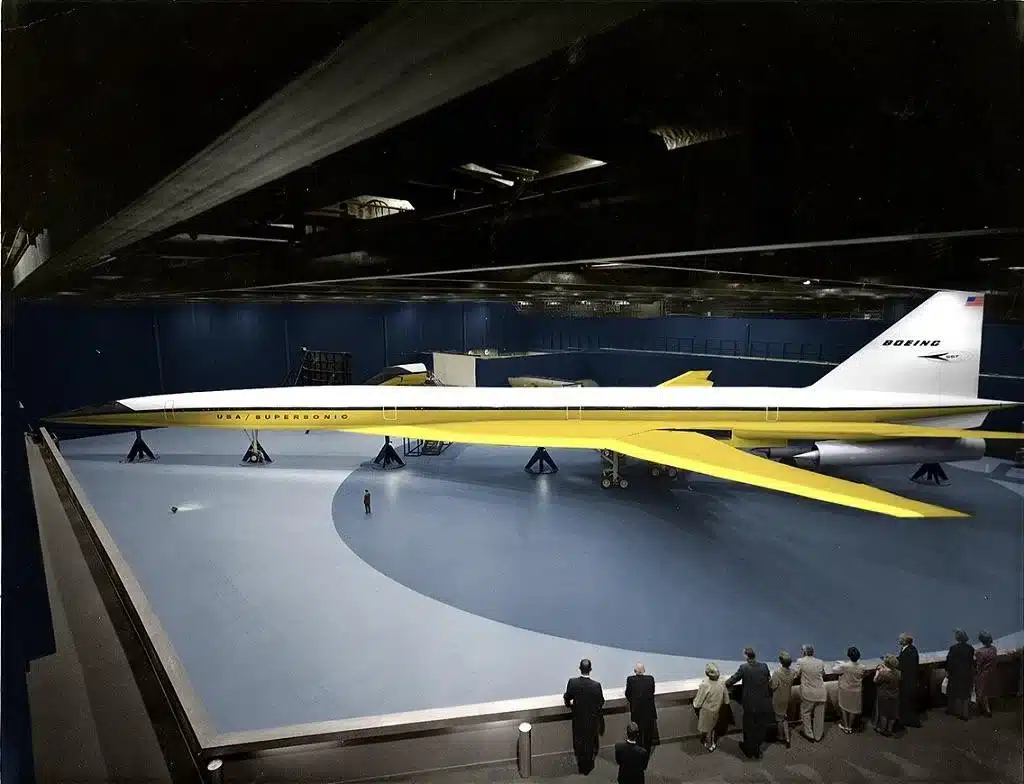
The Boeing 2707 or SST was a supersonic plane that was promised to fly at Mach 2.7, carry 270 passengers, and have a range of 4,163 miles (6700km).
In comparison, Concorde was a bit slower and flew at Mach 2.04 and it could only hold 100 passengers.
The supersonic jet also included a swept-wing design like the F-14 fighter jet.
Unfortunately, there were many setbacks as the government needed to approve $100 million in funding upfront.
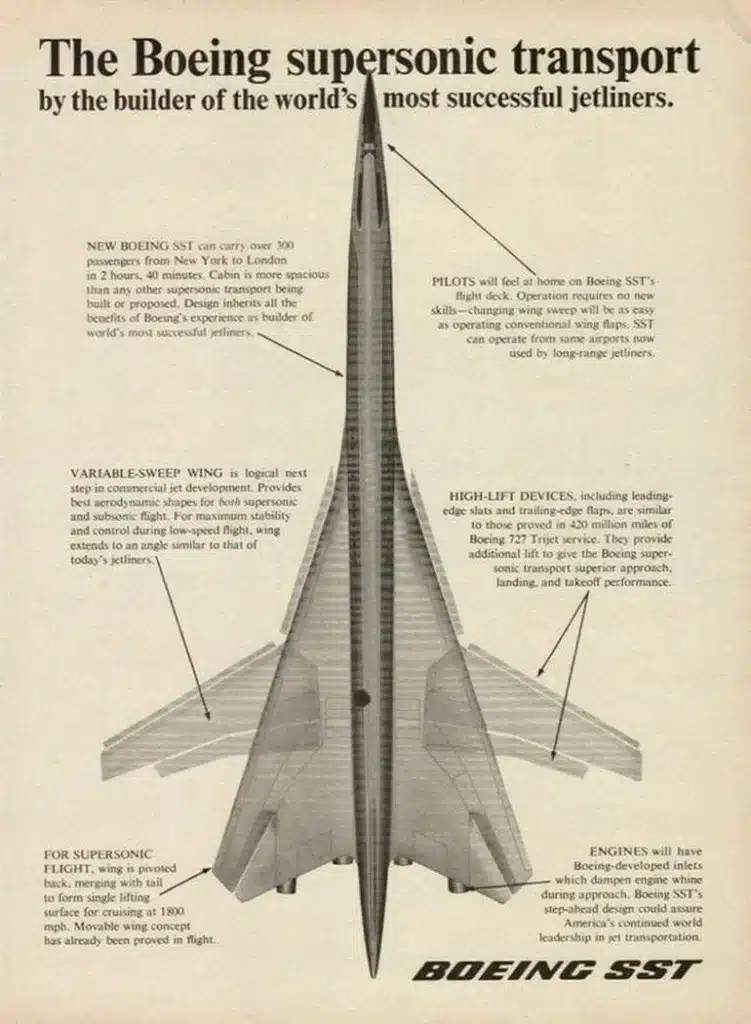
The sonic boom that the aircraft would produce when reaching the speed of sound limited it to transatlantic flights.
This made it economically unviable for most airline companies who canceled their orders.
In 1971, the funding was officially cut off ending the project with only two prototypes built that never took to the sky.
However, many airlines are now making their own supersonic jets.
So it might not be long before we can travel at the speed of sound.

Nalin started his career by working with various national newspapers in India. He has also worked as a writer/editor for many popular websites, while still pursuing his journalism and mass communication degree. Working as a digital nomad has allowed him to inform and educate through his work. When he is not writing, you can find him playing video games or travelling the mountains on his bike.
